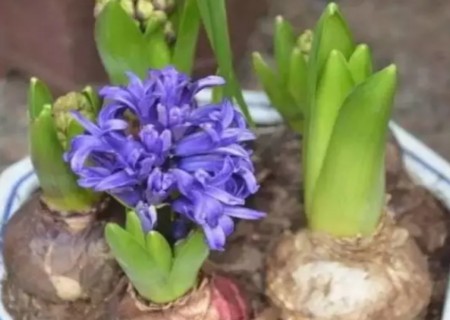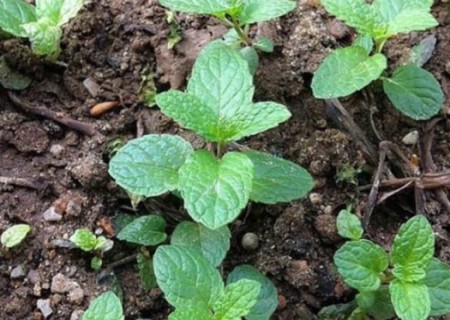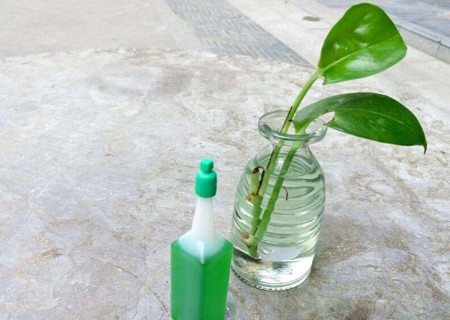How to maintain and manage hyacinth after planting
Generally speaking, the flowering hyacinth only needs to wrap the hyacinth bulb in a cool and ventilated place, such as a newspaper, and then take it out and replant it around October of next year. Of course, you can also buy balls to plant.
In the selection and purchase of seed heads, we should pay attention to the selection of bright skin color, strong texture, no disease spots and insect population is good, usually from the color of the seed coat can basically judge what color of flowers it is. For example, if the skin is purplish red, it will have purplish red flowers, and if it is white, it will have white flowers, but some hybrid varieties will have a more complex color, and sometimes they will not be able to distinguish clearly, so they need to ask the operator to buy.

When the seed head is bought back, in order to make it break the dormancy period, it should be refrigerated in the bottom box of the refrigerator for about a month so that it can blossom smoothly in the future. But when you take it out of the refrigerator, it is best to put it in a cool place for seven or eight days before sowing.
Because the flower buds of hyacinth bulbs have been differentiated, hyacinth bulbs can be planted without base fertilizer. When the seed bulb is planted in the basin soil, the height of the soil should be 2 cm to cover the highest point of the seed bulb. if there is no experience in planting the bulb, it is suggested that it is appropriate to expose the soil at the top of the bulb (mainly to prevent excessive watering from causing stem rot. I suggest you use the latter) and pour the basin water thoroughly after planting.
So, how to maintain and manage hyacinth after planting?
Cut off the pedicel in time after flowering, apply cake fertilizer and water twice, or home gardening "general" fertilizer, continue to raise balls, wait for summer leaves to wither, take out the balls, hang them slightly, store them in a cool place ventilated and sheltered from rain, and plant them in autumn.
1. Prophase maintenance
After planting, it can be placed in an environment of no more than 10 degrees to promote root germination, and the whole root germination period is about 20-30 days (depending on the ambient temperature). In the watering link, to achieve dry and thorough watering, remember not to water at will, you can weigh the weight of the flowerpot to determine the degree of dryness and wetness.
2. Late maintenance
After budding, the temperature of the growth environment can be appropriately increased to shorten the time needed for flowering, and the growth temperature should be controlled at about 15-20 degrees. Below 10 degrees, the growth is relatively slow, but does not have much effect on growth; higher than 25 degrees is easy to produce blind flower phenomenon (flower bud growth is not good can not blossom). Usually can lengthen the sunshine time, the sunshine is more, then the plant is relatively short, the plant type is beautiful. Under normal maintenance, it takes about 30 days from budding to flowering. If the ambient temperature is high, the flowering is relatively early.
3. Flowering maintenance
The florescence is about 10-15 days. If the ambient temperature is low, the florescence is relatively long. After flowering, it can be moved into the room to watch and give a certain amount of light every day to prevent the leaves and flower stems from growing steeply.
4. Post-anthesis treatment
After the flowers fade, you can get rid of the residual flowers and raise balls. In daily management, nitrogen fertilizer (cake fertilizer) can be applied once every two weeks to promote the development of bulbs in the soil, and the quality of raising balls has a direct impact on flowering again in the coming year. After the advent of summer, the leaves will gradually wither and yellow, and the amount of water can be gradually reduced. After the bulb enters dormancy, water is completely banned and placed in a cool place (less than 30 degrees, too high temperature is disadvantageous to the formation of flower buds).
Note: in the process of planting, the soil must be dry before watering, so as to avoid excessive moisture corm rot.
Time: 2019-06-09 Click:
- Prev

How to sow peppermint seeds-peppermint sowing method
Peppermint perennial root herbs, plant height 20-40 cm, stems and leaves with mint fragrance, do more flavor seasoning, beverage additives. Fresh peppermint leaves can be used as a vegetable, but also can remove fishy taste, is a necessary seasoning for edible beef. Fewer diseases and insect pests, leaves can repel mosquitoes and flies, more resistant to high temperature, but also resistant to low temperature
- Next

Self-made hydroponic plant nutrient solution (formula and production method)
As the name implies, hydroponic plants are plants cultivated in water, so what about the nutrition of growing flowers and plants in water? This point has become a headache for the majority of cauliflower friends. What is needed to maintain the fertilizer efficiency of hydroponic plants is no longer ordinary fertilizer, but a beautiful fertilizer.
Related
- Fuxing push coffee new agricultural production and marketing class: lack of small-scale processing plants
- Jujube rice field leisure farm deep ploughing Yilan for five years to create a space for organic food and play
- Nongyu Farm-A trial of organic papaya for brave women with advanced technology
- Four points for attention in the prevention and control of diseases and insect pests of edible fungi
- How to add nutrient solution to Edible Fungi
- Is there any good way to control edible fungus mites?
- Open Inoculation Technology of Edible Fungi
- Is there any clever way to use fertilizer for edible fungus in winter?
- What agents are used to kill the pathogens of edible fungi in the mushroom shed?
- Rapid drying of Edible Fungi

